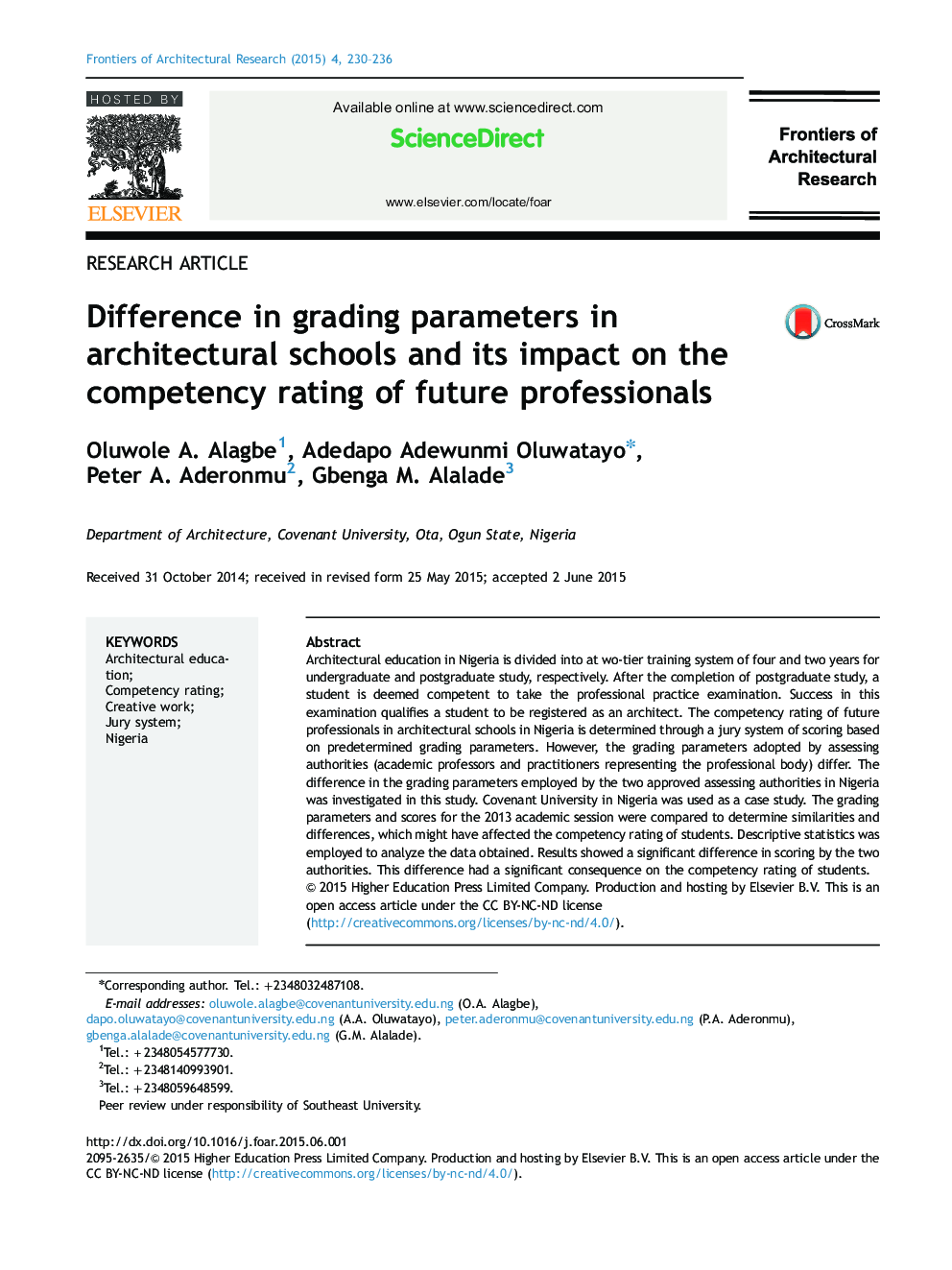| Article ID | Journal | Published Year | Pages | File Type |
|---|---|---|---|---|
| 270781 | Frontiers of Architectural Research | 2015 | 7 Pages |
Architectural education in Nigeria is divided into at wo-tier training system of four and two years for undergraduate and postgraduate study, respectively. After the completion of postgraduate study, a student is deemed competent to take the professional practice examination. Success in this examination qualifies a student to be registered as an architect. The competency rating of future professionals in architectural schools in Nigeria is determined through a jury system of scoring based on predetermined grading parameters. However, the grading parameters adopted by assessing authorities (academic professors and practitioners representing the professional body) differ. The difference in the grading parameters employed by the two approved assessing authorities in Nigeria was investigated in this study. Covenant University in Nigeria was used as a case study. The grading parameters and scores for the 2013 academic session were compared to determine similarities and differences, which might have affected the competency rating of students. Descriptive statistics was employed to analyze the data obtained. Results showed a significant difference in scoring by the two authorities. This difference had a significant consequence on the competency rating of students.
